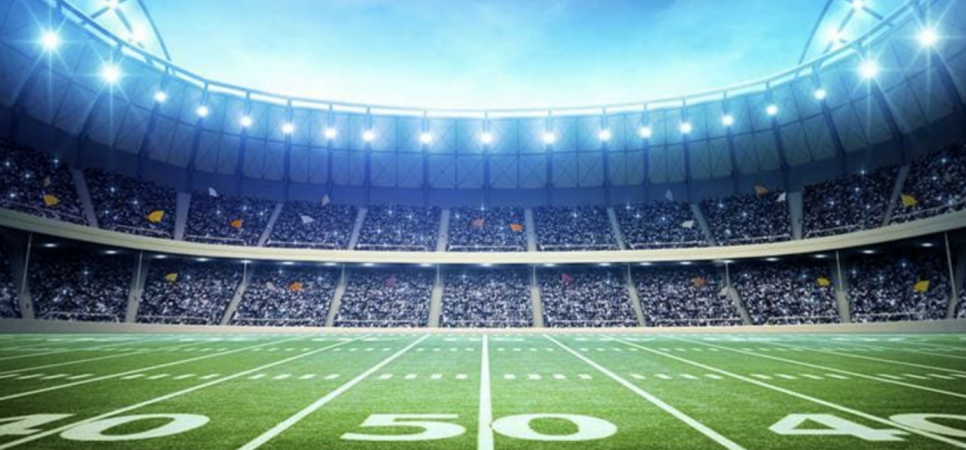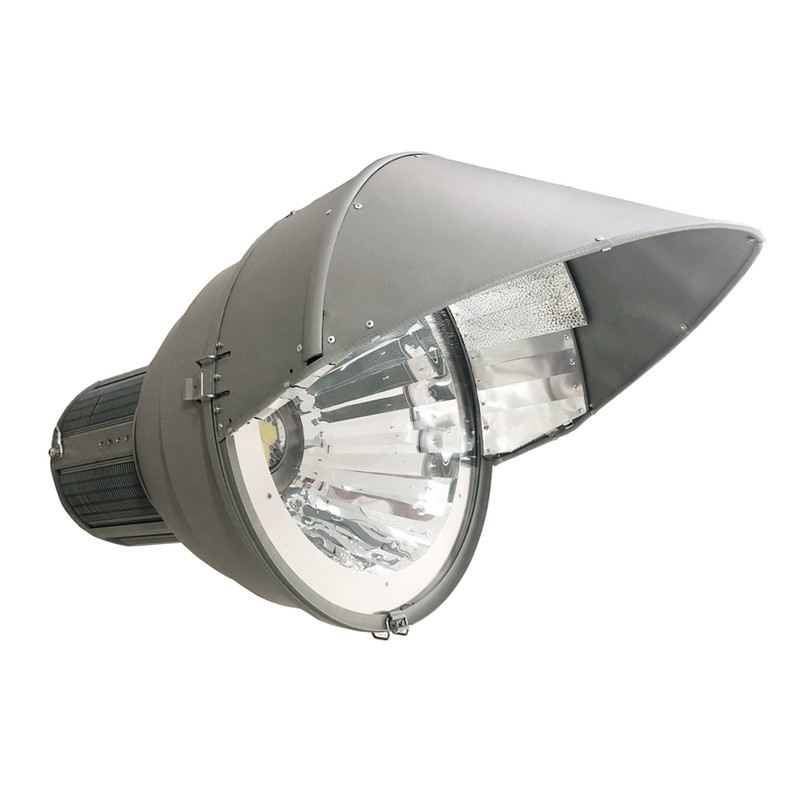Stadium lighting is a vital part of any sports venue or stadium. It is used to illuminate the playing field, making it easier for players, coaches and spectators to see the action taking place. The lighting system also helps to create an atmosphere during events, such as concerts and other entertainment events.
The transition from incandescent lighting to LED technology has been a slow one. The benefits of LED stadium lighting are undeniable.LEDs use up to 85% less energy than traditional stadium lights, so they reduce the overall operating costs of your facility. They also last much longer than incandescent bulbs.
Advantages of 1200-Watt LED Stadium Lights
1. Energy efficiency and cost savings
LED stadium lighting is energy-efficient and cost-effective. LED lights can last up to 50,000 hours, which is about 10 years of continuous use. Stadium lighting using conventional lighting systems will have to be replaced twice or more within a 10-year period. This would require additional costs and labor time.
LED lights also help save on electricity bills because they consume less power than other types of lights. The amount of money saved on each bulb depends on the wattage and how often it is used. For example, if you have 150 bulbs in your stadium, then each bulb uses approximately 5 watts per hour. This means that your total bill would be $150 per month at $0.10/kWh (kilowatt-hour). If you switch to LED bulbs and use them for 12 hours every day, then your monthly bill will be $30 at $0.10/kWh because the bulbs only consume 3 watts per hour when used for 12 hours every day.
2. Brightness and visibility
Stadium lights can be used to illuminate the field or court in a variety of ways. For example, some models are designed with floodlights that shine out in all directions, while others use spotlights that focus on specific areas such as the goalposts or baselines. You’ll also find models that can be adjusted up and down as needed for proper lighting levels.
Whether you’re looking for general illumination or something more specific like floodlights or spotlights, 1200-watt LED stadium lights provide plenty of brightness and visibility — even during nighttime games!
3. Longevity and durability
LED stadium lights are the future of sports lighting. They can be used in both indoor and outdoor stadiums, making them ideal for any type of sport. The most important advantage is their longevity and durability. Compared to traditional lighting, LED lights are more efficient and last longer. This means that you will spend much less on maintenance costs over time – saving you money.
4. Environmental benefits
LED stadium lights are energy efficient and environmentally friendly. The light is generated by LEDs, which consume much less power than traditional bulbs and last longer. Since the amount of electricity used to create LED light is significantly lower than that required by other types of lighting, this translates into fewer carbon emissions.
LEDs also do not contain mercury or other hazardous materials, which makes them safer for use around people and animals. They are more durable than traditional bulbs, so they can withstand wear and tear from being moved around frequently.
Comparing LED Stadium Lights to Traditional Lighting
- Traditional lighting challenges
Fluorescent lights are not very bright, so they need to be used in high concentrations and close to the plants. They also don’t penetrate below the foliage of plants, which means that you can’t see what’s going on underneath the canopy.
They’re expensive. Fluorescent bulbs cost more than LEDs per watt, and they produce less light per watt. This means you need more bulbs to get the same amount of light as LED lights. They’re energy inefficient. Fluorescent bulbs have a lot of wasted heat that affects your cooling costs and increases your carbon footprint.
- LED vs. Metal Halide and High-Pressure Sodium lights
LED Stadium Lights vs. Metal Halide and High-Pressure Sodium lights
The most notable difference between LED stadium lights and traditional lighting is the color of the light they produce. Stadium lights are designed to be highly visible while also providing a nice aesthetic, so usually they use a combination of red, green, and blue LEDs to achieve this result. However, with metal halide and high-pressure sodium lights, the light is more orange than white because the bulbs only have one color of bulb inside them. This means that you need more bulbs in order to get the same amount of light as an LED stadium light would give off.
Another difference between these two types of lights is how they react to heat. When metal halide and high-pressure sodium lights get too hot or too cold, they can take some time to warm up or cool down before they reach their full brightness again. With an LED stadium light, however, there isn’t much variation in temperature that affects its performance because it doesn’t have any moving parts inside it like a metal halide or high-pressure sodium bulb does.
Maintenance and Sustainability
- Routine maintenance practices
The best way to keep your LED stadium lights shining brightly is through routine maintenance. The following are some of the most important maintenance practices:
Switch off the power when cleaning your fixtures. You can use a cloth damped with water and mild soap, or a vacuum cleaner hose with a brush attachment. Never spray cleaners directly on the LEDs as they may damage them.
Check the wiring regularly for damages. If you notice any damage, replace the wiring immediately by getting in touch with an electrician. Use protective covers and clips to avoid short-circuiting issues.
Check if there is any loose connection between the fixture and its control box or power supply unit (PSU). If there is any loose connection, fix it right away before it causes serious problems in your system.
- Sustainable lighting solutions
LED stadium lights are a sustainable alternative to traditional lighting sources. LED stadium lights are energy-efficient, durable, and long-lasting. They’re also cool to the touch and can be easily installed in many different applications.
For example, our 1200-watt LED stadium lights are ideal for commercial applications including warehouses, schools, and industrial buildings.
Product Features:
- Compact and Lightweight Design: With a mere 14kg weight (excluding the bracket and driver) for the 1200W variant, it’s effortless to work at elevated positions.
- Glare-Free Lighting: Featuring a φ75mm single K-COB light source in conjunction with a professionally designed asymmetrical visor, we ensure no visual discomfort for players.
- Exceptional Luminosity: Achieving an impressive lamp efficiency of up to 130lm/w, our solution offers remarkable cost-effectiveness.
- Reliable Performance: Utilizing a phosphor ceramic light source with a heat pipe and top-grade drivers, our LED football lights are synonymous with reliability.
CONCLUSION
The advantages of 1200-watt LED stadium lights are many. They are energy efficient, durable, and have a long lifespan. The lights consume less power than other types of light sources, which means that they require less maintenance and cost less to operate. In addition to this, they also produce less heat, which means that they do not need to be cooled.
The future of stadium lighting is LED. LED stadium lights are energy-efficient, long-lasting, and provide excellent color rendering. They can be mounted to virtually any surface, and they have a wide range of brightness levels to choose from.
With LED stadium lights, you can create the perfect ambiance for your event at any time of day or night. You can even control them remotely using Bluetooth technology! If you have a large stadium or arena with multiple entrances and exits, you may need a customized solution that includes motion detection and dimming capabilities. Contact us!
Post time: Sep-12-2023






